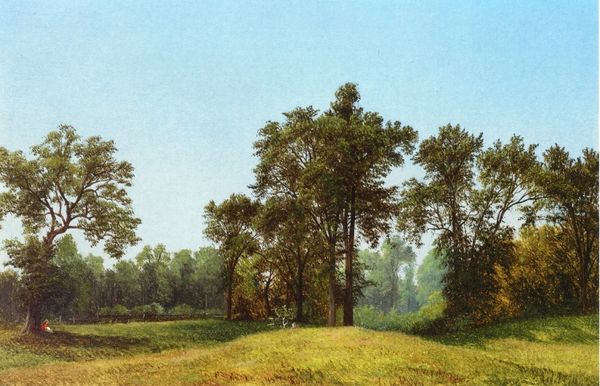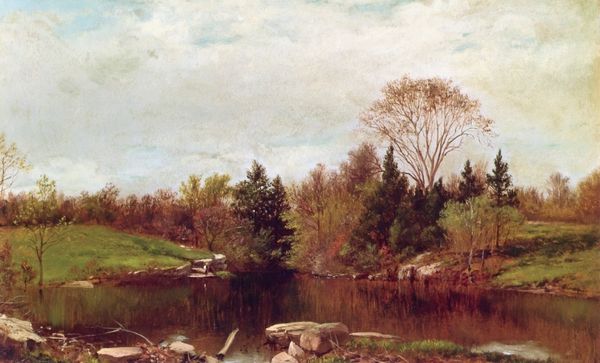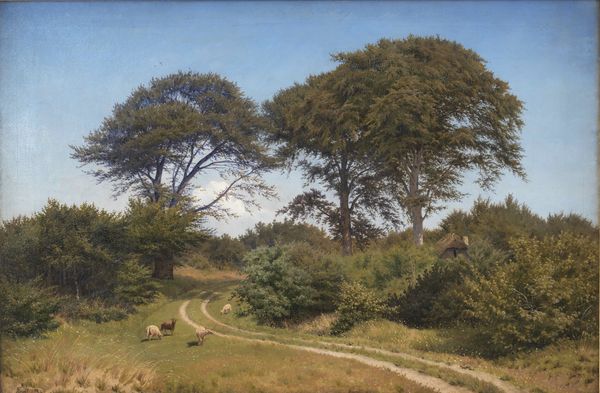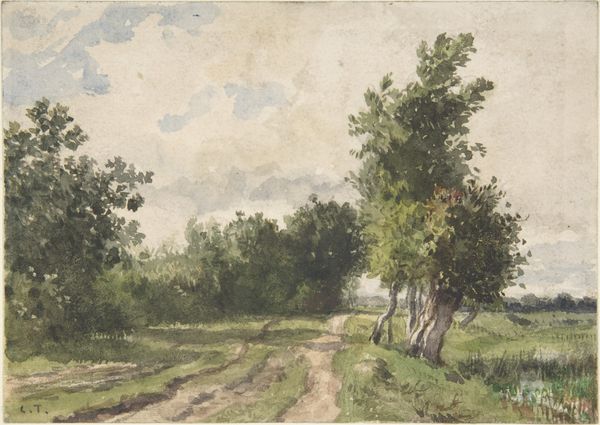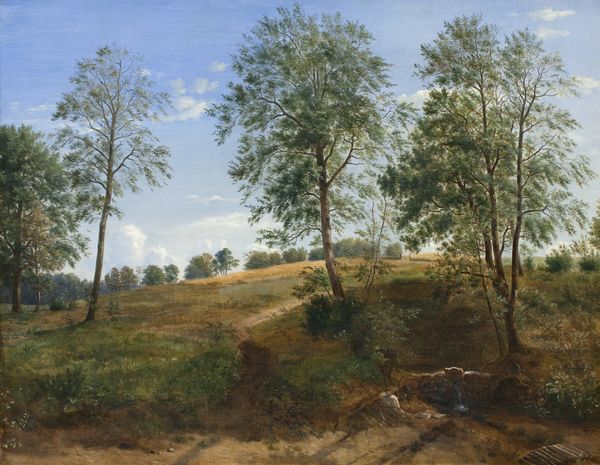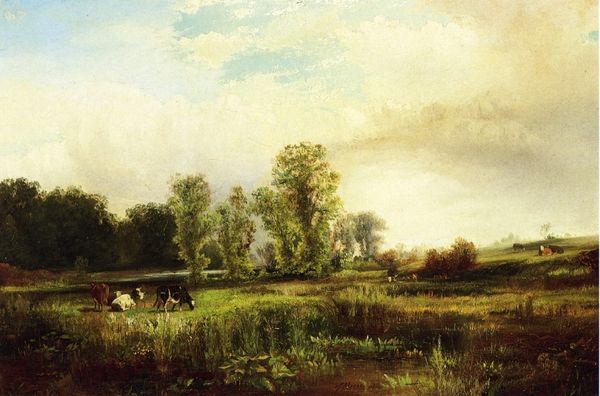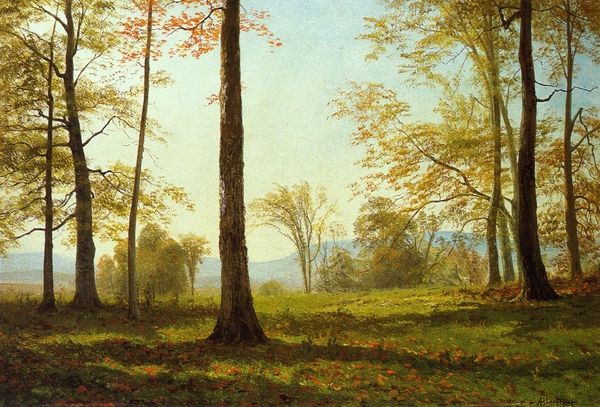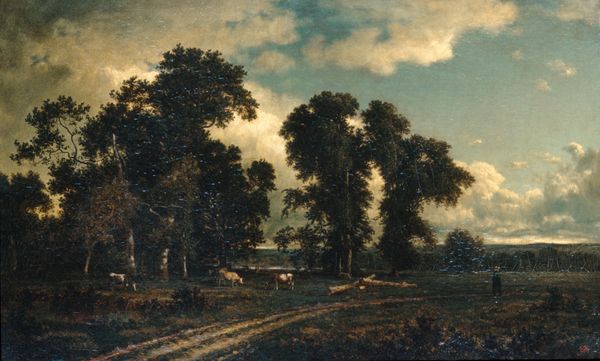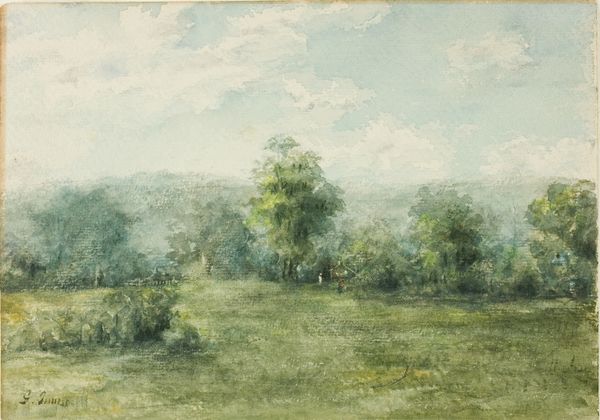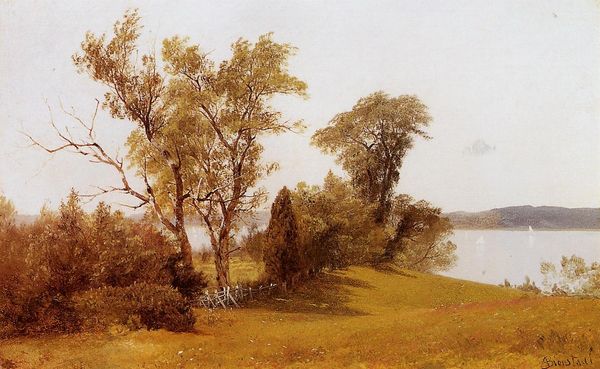
painting, plein-air, oil-paint, impasto
#
tree
#
painting
#
plein-air
#
oil-paint
#
landscape
#
nature
#
impasto
#
romanticism
#
hudson-river-school
#
realism
Copyright: Public domain
David Johnson’s “Young Elms” is made with oil paint, a common material for artists in the 19th century. However, the way Johnson uses the oil paint is significant. He applies it thinly and smoothly to create a highly detailed and realistic image of the natural landscape. This reflects the values of the Hudson River School, who emphasized close observation and faithful representation of the American landscape. Johnson's skilled technique captures the texture of the tree bark, the shimmer of light on the leaves, and the overall atmospheric perspective. The smooth surface and detailed realism also speak to the social context of the time, as this was made during the Industrial Revolution, when there was a growing sense of nostalgia for the rural past. The painting can be seen as a form of idealized landscape, celebrating the beauty and tranquility of the natural world. Ultimately, understanding how and why “Young Elms” was made allows us to appreciate the work's social and cultural significance.
Comments
No comments
Be the first to comment and join the conversation on the ultimate creative platform.
